Artisans Cordage Project

Cordage is a fine form of rope and can be made using a number of different kinds of plants. One of these is flax, a plant with many single, long, wide blades — which is what you want when looking for a plant to make cordage. California Natives may have used cordage for a variety of reasons — to tie bundles of sticks together, to create a handle for a basket, to tie a baby into its cradle board, for bow strings or fishing nets. Can you think of other uses?
Please note – We have found that this project requires a lot of patience and mental stamina. It’s not appropriate for those with difficulties staying quiet and focused for long periods of time.
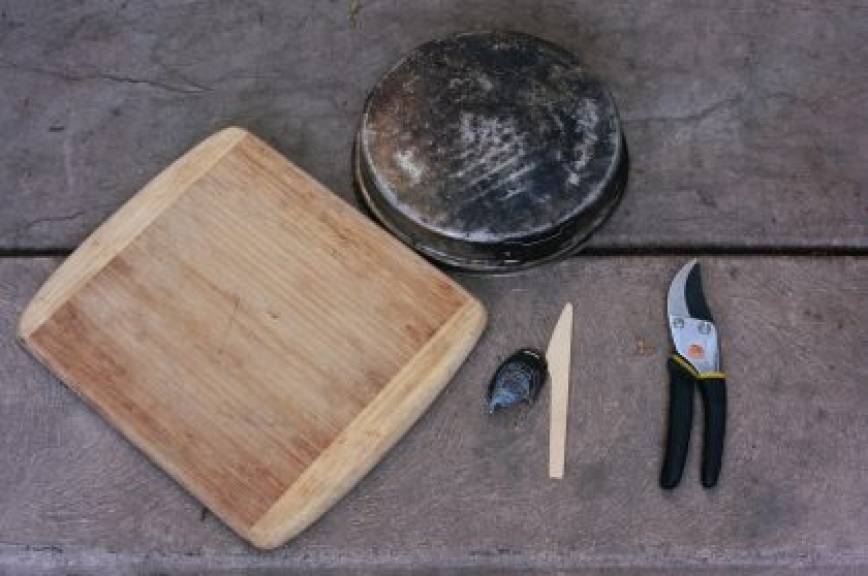
What you will need to bring –
- An old wooden cutting board or the bottom of an aluminum pan
- A butter knife, wooden knife, or mussel shell — as was traditionally used
- A sharp pocket knife for cutting the plant — for Adults only
- A pair of snippers
- Plant material for each Artisan — Flax (Linum usitatissimum)
 Getting Ready to Make Cordage With Flax or Long-blade Leaves – Follow these instructions before coming to Metini / Fort Ross. The images shown here are of Flax (Linum usitatissimum), but remember you can use an appropriate alternative long blade plant
Getting Ready to Make Cordage With Flax or Long-blade Leaves – Follow these instructions before coming to Metini / Fort Ross. The images shown here are of Flax (Linum usitatissimum), but remember you can use an appropriate alternative long blade plant
Locate a source of Flax. Important Notes – Only take plants that you are legally allowed to harvest. Be sure of any regulations or restrictions when harvesting outside your own garden. Also be sure you only harvest plants that you know to be safe with %100 certainty — some plants don’t need to be ingested to be toxic!
Harvesting – Plan your harvesting schedule, according to the plant material you will be gathering.
Flax must be fresh in order to make cordage, so you’ll want to collect a few large blades per person, the day before you come to Metini / Fort Ross
Follow the blades from the tip (Sky end) back towards the earth (Earth end). Identify the group of three, lighter green blades snug against each other. You will leave these three intact so that this part of the plant can continue to grow
On the right and left sides of these three blades, you’ll find one more blade of a darker shade of green. Cut these blades from the outside of the fan — between the thumb and pinky finger in the photo — about three inches from the base of the plant
As long as you leave the three young blades in the center, you will, in effect, be pruning the plant and enabling it to continue to grow in a healthy way
Wrap these blades in a wet towel and put into a plastic bag
Bring a butter knife and work surface — a small cutting board or wide-bottom aluminum pan will work well

How-to Instructions & Videos – Before coming to Metini / Fort Ross, read through the following instructions and watch the videos below to familiarize yourselves with the process of making Flax cordage. Be prepared to do this project on site. Adults may want to do a trial run before coming to Metini / Fort Ross so they feel comfortable leading their group through this project. Timing on site may be tricky, and you should be prepared to do this project without instructions from the ELP Instructor!
The method of extracting plant fibers for cordage is different depending on the plant you are using. However, the method of twisting the fibers into cordage is largely the same for all the plants discussed on this page
Notice the two halves that make up the whole plant blade. You have two ends: Earth end (came from the earth) and Sky end (grew towards the sky)
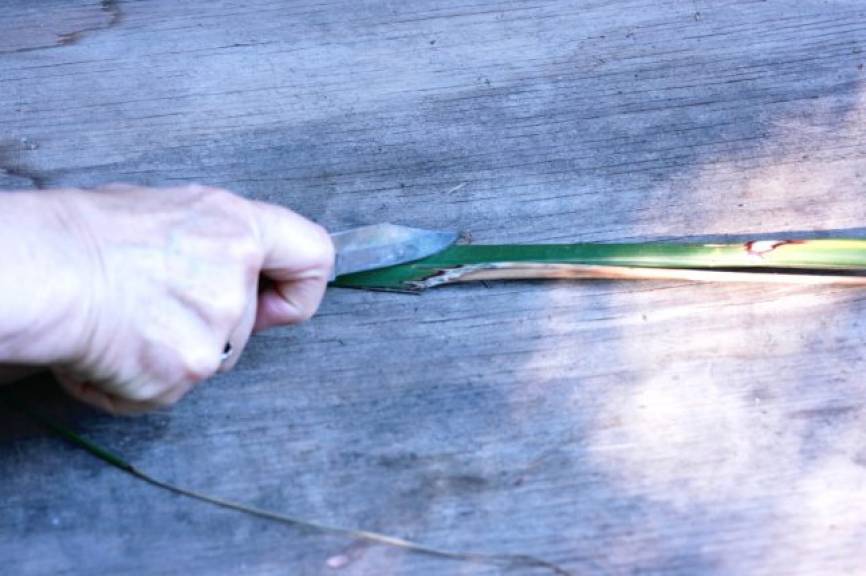
Cut off hard, woody earth end. Trim wispy or damaged parts from sky end
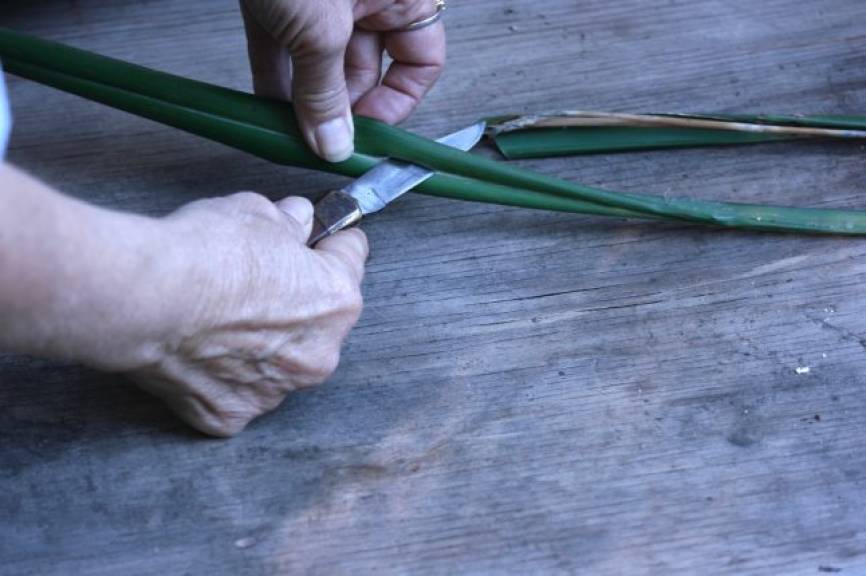
Insert a sharp point into the spine down the middle of the two halves; slit down the length of the entire blade. You now have 2 pieces we will call 1A and 1B

Measure about 1/2″ from the newly cut edge. Make a horizontal score that does not go all the way through the blade as you will be creating two halves out of piece 1A
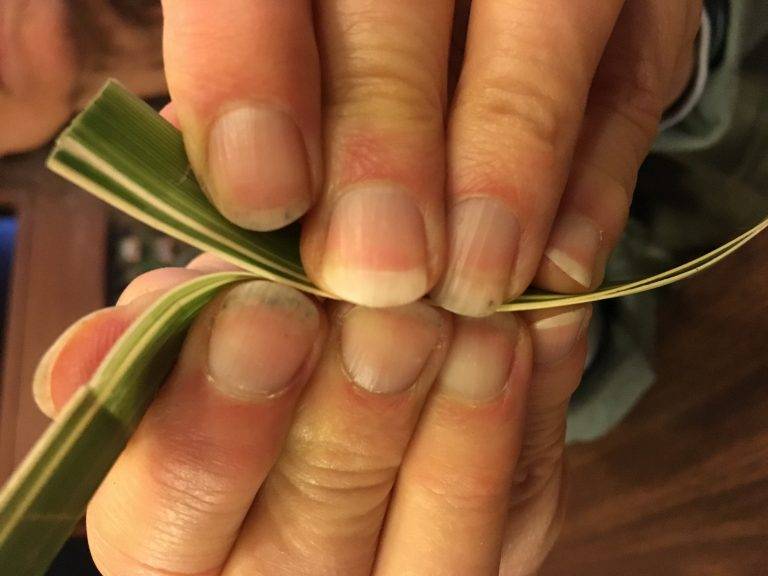
To split, hold piece 1A with the edge facing you. Use the tips of your pinky, ring and middle fingers of both hands to stabilize the blade. This leaves your index and thumb fingers free to work the split from earth to sky end. Slowly separate front (slight sheen) from back (dull), making sure both split halves have as much equal amounts of fiber as possible. Discard the back (dull half) of the blade. Repeat with blade 1B
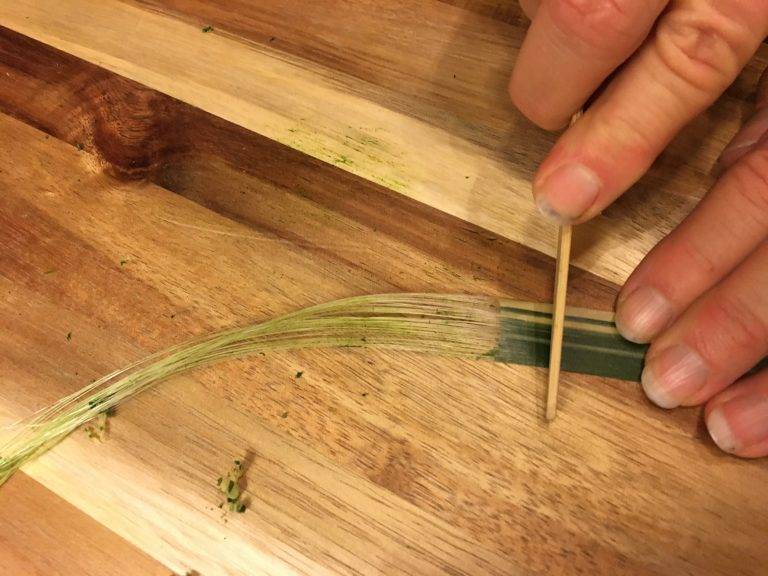
Using your cutting board or aluminum pan bottom and your butter knife, begin scraping off the green ‘leaf’ layer. Scrape in one direction until you are left with only white threads. Prep a few of your blades this way before you begin twisting your material into cordage
To begin twisting into cordage, take one of your prepared lengths of white threads and fold in half. Pinch the left half of the threads so that they do not move
With the right side of your white threads between your right index and thumb fingers, twist away from your body. As you twist it more and more tightly, it will naturally create a loop, which is your midpoint
Pinch the loop with your left index and thumb fingers (fingers 1 and 2). To begin twisting into cordage, twist the top (back) strand away from you; With fingers 1 & 2 pinching back thread, extend your middle finger (finger 3) to capture the second strand of white threads (front) between index and middle finger. You will be looking at the palm side of your hand
Twist your entire hand so that your knuckles are now on top. Repeat, repeat, repeat…
To add length to either strand, splice the opposite end of the strand you’re now adding to the existing cordage (i.e., If you’re coming to the end of the earth end of your first strand, splice the sky end of the new strand into your cordage. If you’re coming to the end of the sky end of your first strand, splice in the earth end of your next strand)